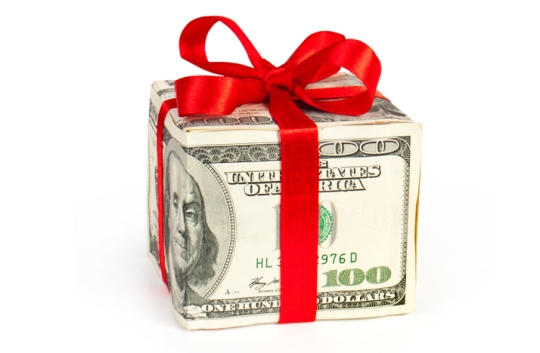‘Tis the season of giving as food drives, Salvation Army bell ringers, gift sponsorships, and charitable appeals become commonplace. Americans give and they give a lot. The total amount of charitable giving was $316.23 billion in 2012, an increase of 3.5% from the previous year. Total giving as a percentage of GDP was 2%, the highest proportion for any country, and individuals are responsible for 72% of the total amount while corporations account for just 6%. Individual motives for donating to charity can vary from the Christmas spirit to economic and tax benefits to passion for human needs. But can giving be about something less grand, more anomalous and internal, and perhaps, even, irrational?
For a long time, philanthropy was mostly ignored by social scientists who assumed that individuals are rational, self-interested, and possess well-defined and revealed preferences. But why do people part with their hard-earned money in the first place? And how can cash-strapped charities can easily induce individuals to give more? These are vital questions that basic behavioral economic insights can answer. Do individuals really fork over a couple bucks to receive a coffee mug and their name printed in the back of an annual report? Why do charities behave as if donors were calculative and rational automatons? Behavioral findings presented by a UK government report and profiled by David Leonhardt in The New York Times indicate there is more to charitable giving than we have previously thought.
Economists John List and Dean Karlan used charitable giving as a laboratory for studying human behavior and used their findings to consult charities on how to induce greater contributions. For instance, a common practice amongst charities and corporations is to match the donations of individuals to encourage greater sums of giving. Karlan and List tested this piece of conventional wisdom and determined it was only partially correct. Even though the existence of a matching offer was very important—in an experimental study, 2.2% of people who received a match offer made a donation compared with only 1.8% of people who did not—the size of the match did not have any effect on giving. “Donors who received the offer of a one-to-one match gave just as often, and just as much, as those responding to the three-to-one offer.” This is inefficient on the donor’s part as a larger match ratio effectively increases the amount of a person’s gift by giving them a discount. So much for those aforementioned assumptions of rationality.
Another common fundraising practice that proved to be more beneficial than unnecessarily large matches is so-called “seed money”. Seed money are funds that charities raise toward their ultimate goal before officially announcing a donation drive, making their cause seem more legitimate and their goal more attainable. An experiment that List conducted with the University of Central Florida and their campaign to buy new computers indicated that the more upfront money the university claimed to have, the greater amount of contributions it raised.
When Rachel Croson, an economist at the University of Dallas, examined public radio station pledge drives, she observed how an anchoring effect could compel listeners to make larger contributions. Anchors can serve as starting points for people who lack well-formed preferences and are uncertain about appropriate values. When callers were told that a previous donor made a contribution of $300, despite the average contribution being $75 dollars, they gave an average of 12% more. The $300 figure inserted an idea into callers’ minds about the appropriate donation value and the psychological vagaries of shame, prestige, generosity, and inspiration did the rest. Croson’s further experiments lend a cautionary tale too. When the anchor value seemed too large to be relevant, say, $1000, callers actually gave less.

If giving was strictly rational, huge charitable donations from the likes of Warren Buffet and Bill Gates would induce others to give less to the supported causes. Economist James Andreaoni argued the exact opposite is the case. Andreaoni formulated the “warm glow” theory which states that people derive an internal satisfaction from giving even though their contributions remain anonymous. Even though Buffet or Gates consistently bequeath massive charitable gifts, people would prefer that gifts come from them and not from others, even the two wealthiest people on the planet. The intrinsic motivation to give can be tapped into further by drawing on a peer effect. When making acts of giving more visible to others within one’s social group, we are more prone to give.
While some behavioral economic findings can lead to unconventional fundraising practices, other findings are unsurprising. In door-to-door fundraising, men give more money when the person asking for the gift was an attractive woman. Charitable appeals also proved to be most effective during the holiday season. People are more likely to make a donation in December than in January. And charities shouldn’t be quick to discard the beloved coffee mug and annual report donor list just yet. Economist William Harbaugh found that individuals hold a powerful preference for prestige, implying that “charities can increase contributions by reporting gift categories and publicizing donations” and contributions are most often the lower bound of a specially named category (i.e. $50,000 to $99,999 to qualify as a “Gold Class Donor”).
The nuances of behavioral science will surely be at work behind the scenes this holiday season but the donors’ motives—whether rational or not—should not matter as long as charity coffers are being filled. Nevertheless, we shouldn’t think twice about being compassionate and generous this year.

